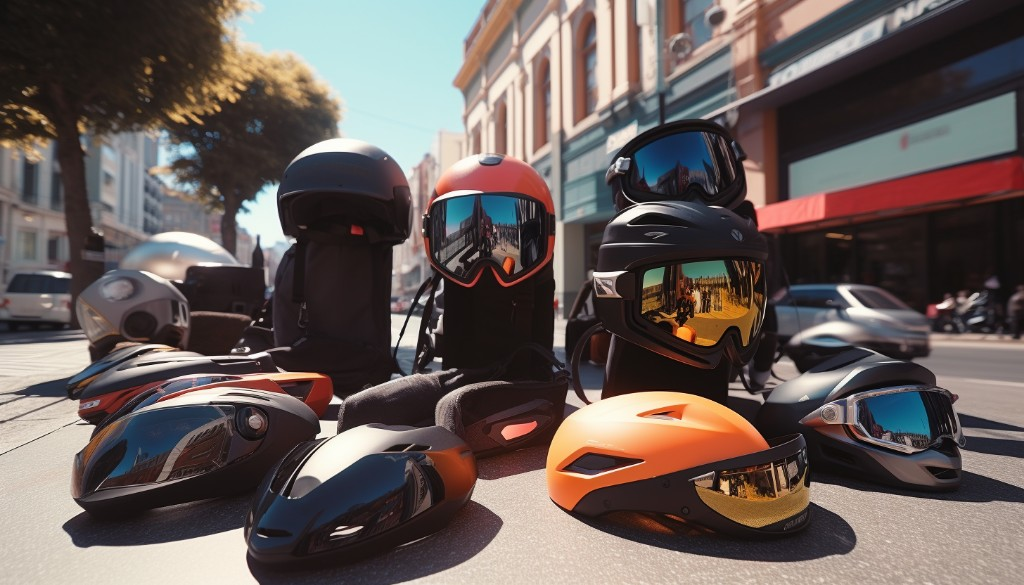There’s a thrilling sensation that comes with gliding on an electric skateboard, a perfect blend of speed and freedom. But weaving through traffic on these modern chariots brings its own challenges. This comprehensive guide aims to equip you with the essential knowledge and strategies to navigate the bustling streets with confidence, ensuring a safe, comfortable, and exhilarating ride every time.
What We’ll Cover:
- Gaining an Understanding of Electric Skateboards
- Selecting the Appropriate Gear
- Perfecting Your Riding Technique
- Learning to Navigate Traffic
- Importance of Regular Maintenance
- Responding to Emergencies
So, strap on your helmet and tighten your elbow pads. Let’s jump right in and discover why rushing wind and smooth pavement are the only things you should feel while riding your electric skateboard!
Understanding Electric Skateboards
Electric skateboards are gaining popularity due to their unique blend of fun and convenience. When you hear the term “electric skateboard,” you might picture a traditional skateboard with a motor attached. While that’s not entirely wrong, there’s a lot more to these electric-powered devices.
One of the first things you need to know is that there are various types of electric skateboards on the market. These include electric longboards, off-road electric skateboards, and all-terrain electric skateboards. An electric longboard is generally longer than a standard skateboard and is built for cruising at high speeds over long distances. Off-road electric skateboards, as the name suggests, are built to handle rough terrains. All-terrain electric skateboards are designed to handle both smooth and rough surfaces with ease, and are perfect for hill riding.
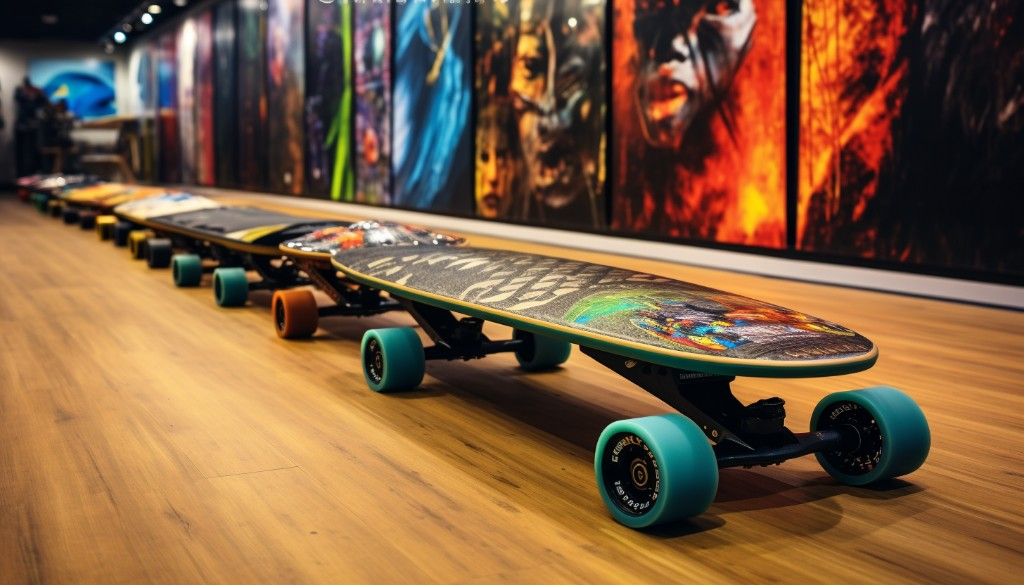
The second thing to note about an electric skateboard is how it works. Typically, an electric skateboard is fitted with a battery-powered motor that turns the wheels. This motor is controlled by a handheld remote that allows the rider to adjust speed and braking.
Lastly, it’s crucial to understand the battery life of an electric skateboard. Most electric skateboards can run fsor anywhere between 10 to 20 miles on a single charge, depending on factors like the rider’s weight, terrain, and speed. Charging time also varies depending on the board model and the type of charger used.
The Differences Between Electric Skateboards and Traditional Skateboards
When it comes to comparing an electric skateboard with a regular skateboard, there are several key differences to consider. For starters, an electric skateboard is generally heavier due to the addition of an in-built motor and battery pack. This makes them less portable but they compensate for this with their unique features.
One of the most apparent benefits of electric skateboarding is speed control. Unlike regular skateboards where your speed depends on how fast you can push off the ground, an electric skateboard allows you to control your speed using a remote control. This means you can maintain a consistent speed without having to constantly push off with your foot.
Furthermore, riding a motorized skateboard doesn’t require as much effort as riding a regular skateboard. This makes electric skateboarding more accessible for people who may not have the physical fitness or skill to ride a traditional skateboard.
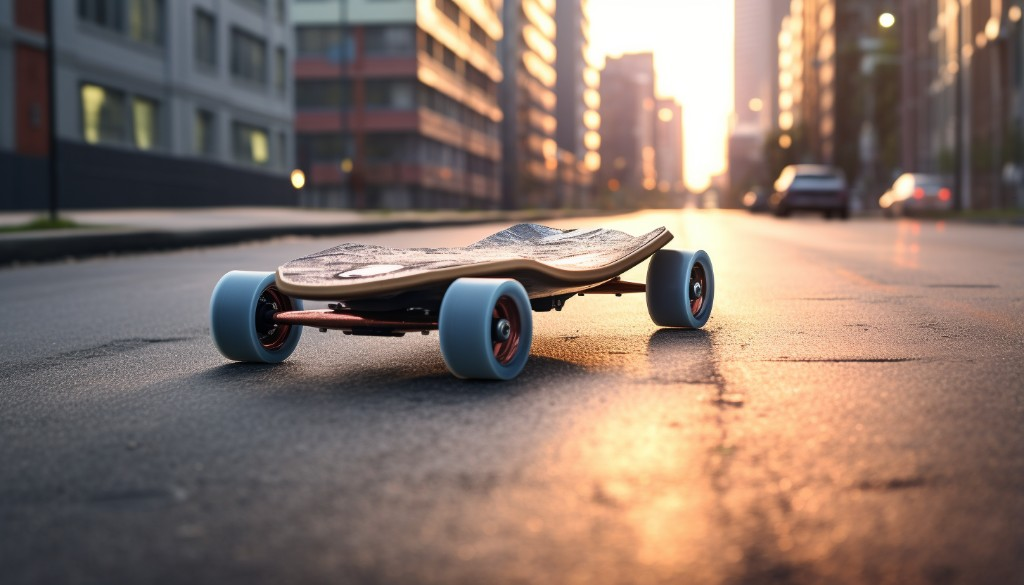
Choosing the Perfect Electric Skateboard for Urban Commuting
If you’re planning to use an electric skateboard for urban commuting, there are several factors you need to consider.
- Consider commute distance: The distance you’ll be covering on your commute will determine the kind of battery life you need from your electric skateboard. If your commute is long, you’ll want a board with a higher battery capacity.
- Think about terrain: If you’re commuting through a city with rough roads or uphill climbs, you’ll need a board that’s powerful enough to handle such conditions.
- Consider the weight: A lighter board will be easier to carry when not in use, but could also mean less stability when riding at high speeds.
- Take into account board durability. Urban commuting can be tough on an electric skateboard due to constant use and exposure to various weather conditions. Opt for a model known for its durability to ensure it lasts.
Ultimately, choosing the right electric skateboard comes down to understanding your personal needs and researching the options available. Armed with this knowledge, you’ll be well on your way to finding an electric skateboard that fits perfectly into your urban commuting lifestyle.
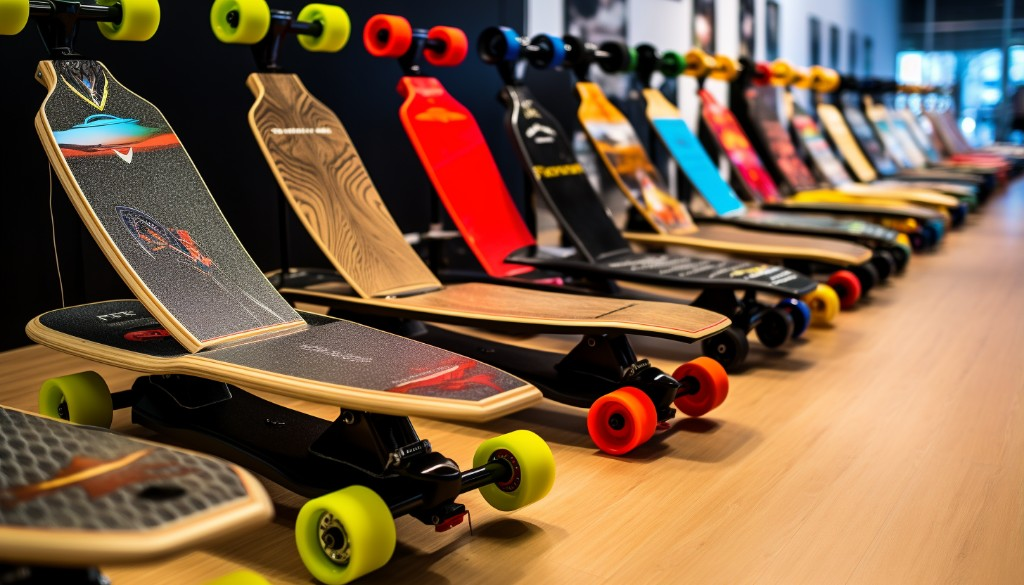
Choosing the Right Gear for Safety and Comfort
One of the fundamental aspects of riding an electric skateboard is ensuring you have the right safety gear. It is not just about comfort; it’s also about your security, health, and overall well-being. The reason is clear; wearing appropriate safety gear can significantly minimize injury during an accident.
When you plan to hit the streets, you should always wear a helmet. This is not a recommendation; it’s a must! Helmets are designed to protect your head from severe impact, which can lead to traumatic brain injury or even death. The phrase “wear a helmet” is not just another safety tip; it’s a life-saving mantra that every rider should abide by when riding their electric skateboard.
Aside from helmets, other protection gear such as elbow pads, knee pads, and wrist guards are also essential. These pieces of gear are intended to shield your elbows, knees, and wrists from scrapes, cuts, and fractures. They also add an element of comfort, allowing you to ride with confidence and ease.
And let’s not forget the importance of proper footwear. Your shoes play a critical role in maintaining balance and control while riding your electric skateboard. The wrong pair could lead to slips and falls. Hence, it’s essential to choose shoes with excellent traction and comfortable soles when using an electric skateboard.
The importance of wearing the appropriate safety gear cannot be overstated. Unfortunately, accidents while skateboarding do occur, but you can minimize their impact by following these safety tips when choosing your gear. Remember: it’s always better to be safe than sorry.
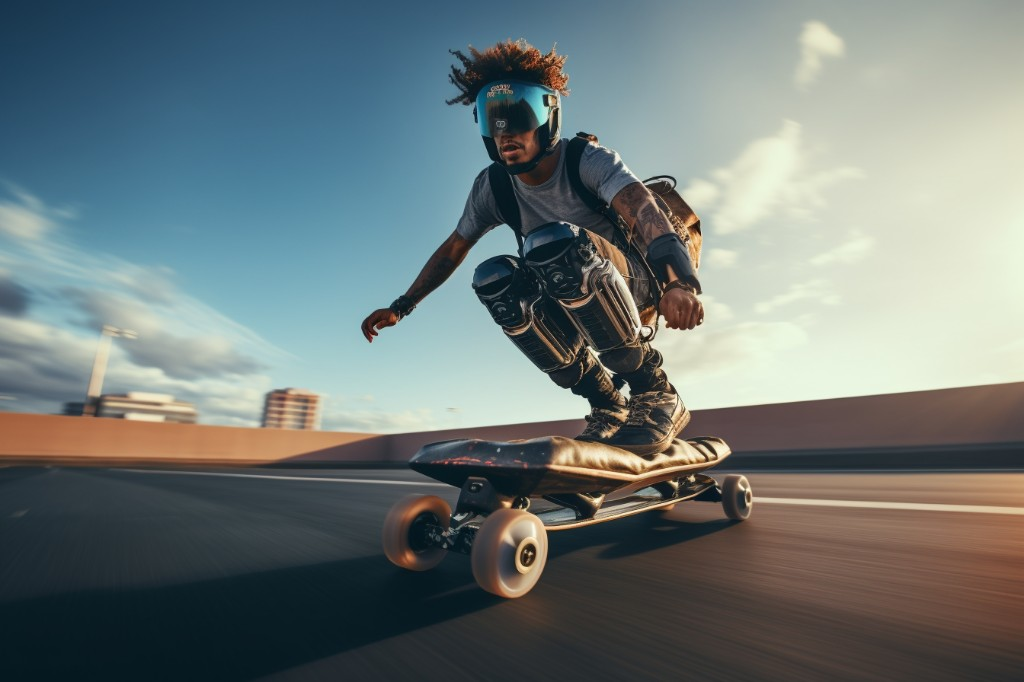
Insights into Helmet Use and Protective Gear
Understanding the significance of helmets and protective gear is paramount for every electric skateboard rider. When it comes to helmet use, the helmet when riding is not just for adhering rules but essentially a life-saver, protecting you from potential head injuries.
Different types of helmets are available in the market, each varying in design and level of protection. For instance, some helmets cover the entire face, while others only protect the upper part of the head. In any case, a good skateboard helmet should fit snugly on your head, be comfortable to wear, and meet the safety standards set by reputable organizations.
Apart from helmets, protective padding like elbow pads and knee pads are also invaluable for safe skateboarding. Elbow pads are designed to protect your elbows from injuries during falls or collisions. Similarly, knee pads shield your knees from damages that can occur when you fall directly onto your knee.
These types of gear are usually made from durable materials like hard plastics and foam padding to absorb impact effectively. They also come with straps that allow you to adjust their fit according to your size.
Importance of Suitable Footwear
When it comes to riding an electric skateboard safely and comfortably, choosing the right footwear is essential. Proper safety should always be your priority, and your shoes play a significant role in this respect.
Specific types of shoes are more suitable for skateboarding than others. For example, sneakers with flat soles provide excellent grip on the skateboard deck, reducing the risk of slipping off while riding.
Additionally, shoes with padded collars offer protection for your ankles, which is particularly important for performing tricks. On top of that, skateboarding shoes should have shock absorption features to minimize impact on your feet when landing jumps or going over bumps.
In summary, wearing suitable footwear will not only improve your skateboarding experience but also ensure your safety on the board. Moreover, investing in quality shoes will give you better control over your skateboard and provide you with more confidence while riding.
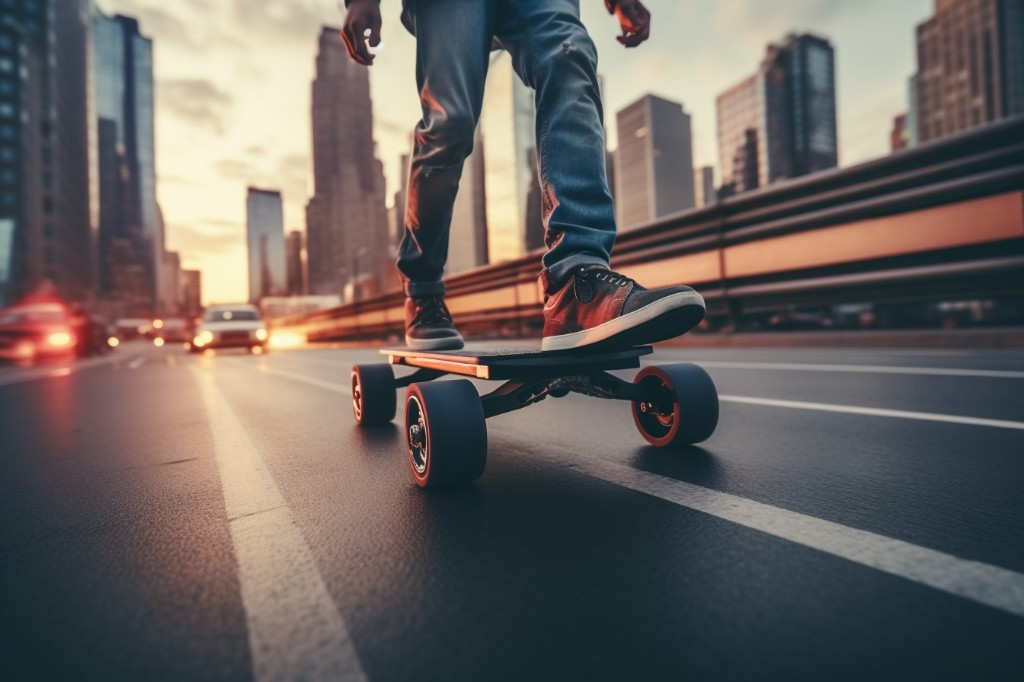
Mastering the Art of Riding
Every skateboarding aficionado knows that the key to safe riding lies in mastering a few specific skills. At the heart of these are understanding and managing weight distribution, settling into a proper riding position, handling the board effectively, and developing a strategic approach to riding.
Getting to grips with weight distribution is about getting a feel for having your weight on your front foot. The front foot is crucial for guiding the direction of your skateboard. You also want to be able to manage the weight on your back foot, which is responsible for pushing off and generating speed in most skateboarding styles.
Your riding stance, whether you’re more comfortable with your left foot forward (regular) or right foot forward (goofy), also plays an integral role. The front foot is generally placed at a 45-degree angle across the board, while the back foot sits perpendicular to the length of the board. This position allows you to shift your weight effectively and respond to your skateboard’s movements.
Board handling is another significant aspect. You need to be confident when standing on your board, shifting your weight from one foot to the other and using your body’s movements to steer.
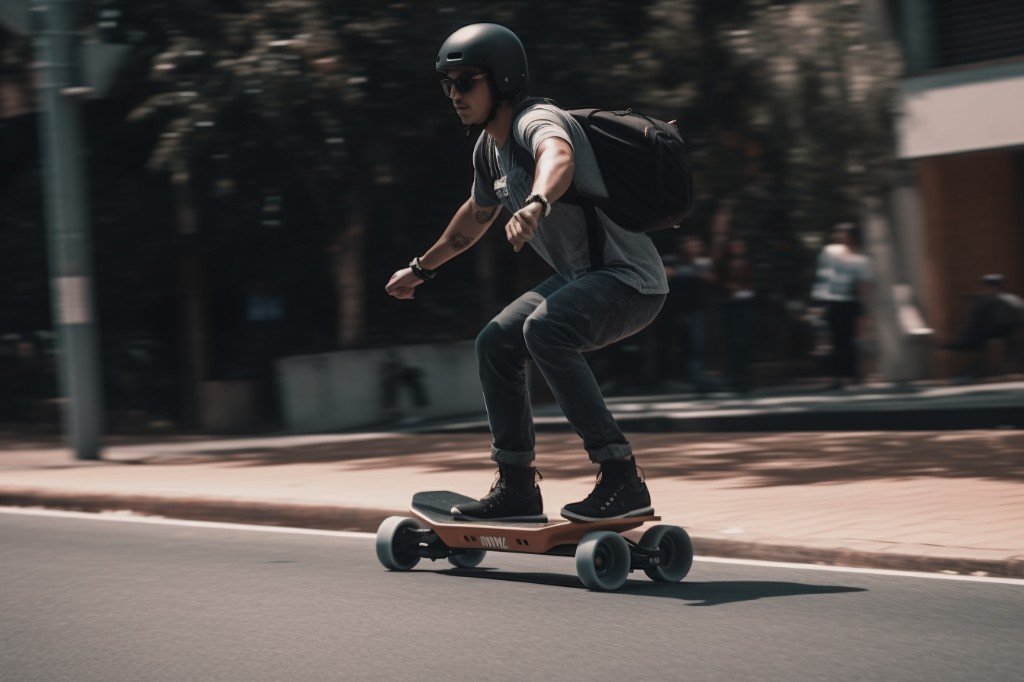
Lastly, having a sound riding strategy means being aware of your surroundings and making calculated decisions based on them. For instance, if you’re riding down a busy street, you’ll have to take into consideration other road users, obstacles, and even the road surface itself.
Starting Slow and Gradually Increasing Speed
One of the most valuable pieces of advice for beginner skateboarders is to start slow. It’s important to first develop a sense of balance and control before attempting any stunts or reaching higher speeds.
If you maintain control of your speed from the get-go, you’ll find it easier to develop your skills in a safe and controlled manner. A key part of this control comes from understanding how to accelerate and brake safely. This involves knowing when to shift your weight forward to accelerate and when to lean back to brake.
Practicing at slower speeds also helps you build up muscle memory for these movements, which will be invaluable when you start moving faster. As your confidence and skill level increase, you can start to experiment with higher speeds. Remember, it’s not about how fast you can go, but how well you can control speed.
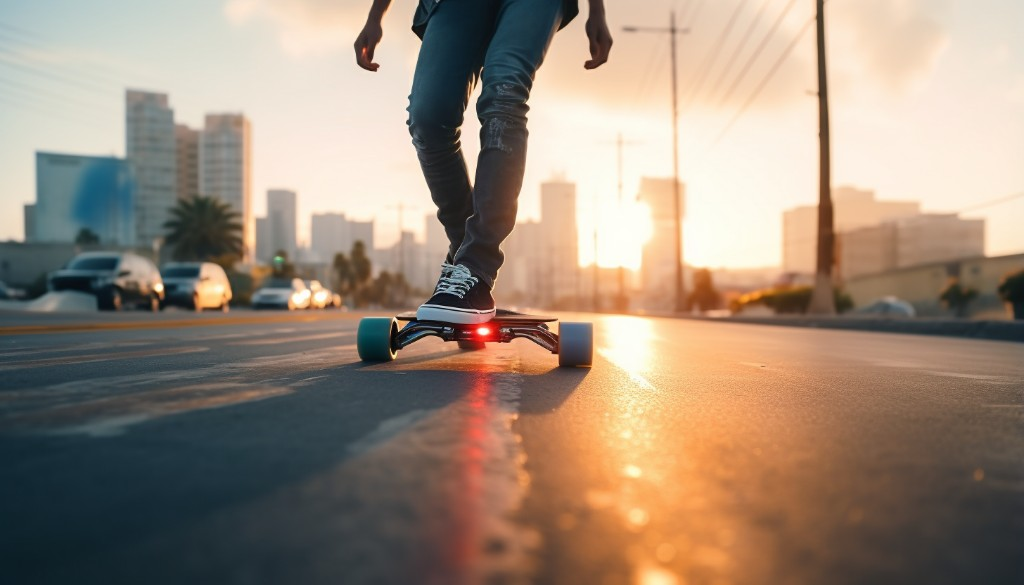
Techniques to Maintain Stability and Balance
Mastering balance on an electric skateboard may appear challenging at first, but with practice and the right techniques, it becomes second nature.
Firstly, the concept of board balance is paramount. It’s not just about standing on the board; it’s about shifting your weight appropriately as you ride. Your front foot plays a significant role here as it guides the direction of your movement.
You also need to pay attention to how you position your back foot. Placing it too far back or too forward could lead you to lose control over your skateboard’s movements.
A technique that can enhance stability is the act of shifting your weight. Lean forward when you want to speed up and lean back when you want to slow down or stop. This act of shifting your weight helps maintain control over acceleration and deceleration.
Ultimately, maintaining stability and balance while riding an electric skateboard comes down to practice. The more time you spend on your board, the more comfortable you’ll become with these techniques and concepts.
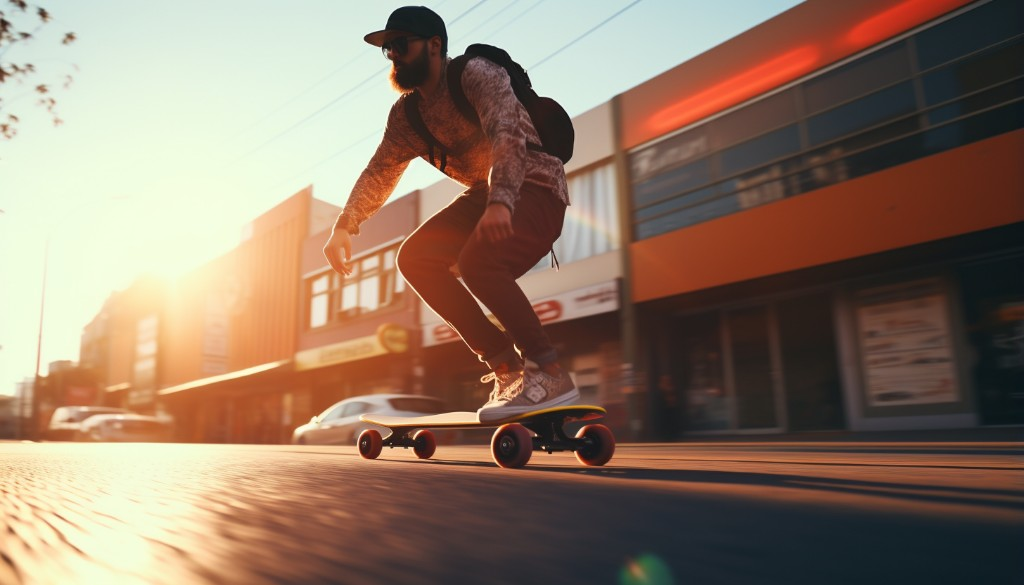
Navigating the Traffic Landscape
Riding an electric skateboard can be both exhilarating and challenging, especially when it comes to negotiating through traffic. Understanding the dynamics of traffic flow is an essential aspect of riding an electric skateboard safely in a city environment.
One of the first elements to consider when riding an electric skateboard is understanding road conditions. Potholes, debris, and even wet surfaces can pose dangers. Being aware of these hazards and knowing how to maneuver around them can make your ride safer and more enjoyable.
- Look ahead and identify potential hazards.
- Adjust your route or slow down if necessary.
- Maintain a safe distance from vehicles.
For a smooth ride, understanding traffic flow is key. Paying attention to the speed and direction of other vehicles on the road can help you anticipate changes in traffic.
- Observe the movement and speed of other vehicles.
- Do not weave in and out of traffic.
- Use bicycle lanes where available.
Road etiquette is another critical aspect of safely riding an electric skateboard in traffic. Respect for other users of the road, including drivers, cyclists, and pedestrians can help foster a safe environment for all.
- Always give right of way to pedestrians.
- Do not block lanes or sidewalks.
- Use hand signals to indicate turns or stops.
Lastly, pedestrian safety is paramount. When you ride an electric skateboard, you must be aware of pedestrians and yield to them when necessary.
- Slow down around congested areas.
- Do not ride on sidewalks unless permitted by local laws.
- Yield to pedestrians at crosswalks.
These tips for riding electric skateboards in traffic will greatly enhance your safety and the safety of others around you.

The Role of Traffic Laws and Regulations
Laws and regulations governing the use of electric skateboards on public roads vary widely. However, understanding and adhering to these rules can greatly enhance your safety when you ride an electric skateboard.
One of the first things to understand about traffic laws is how they apply to electric skateboards. In many places, electric skateboards are considered personal mobility devices (PMDs) and are subject to specific rules. For example, some jurisdictions require PMDs to be ridden on bicycle lanes or designated paths.
Likewise, it’s important to familiarize yourself with transportation rules related to electric skateboards. This may include speed limits, restrictions on where you can ride, and requirements for safety equipment such as helmets and lights.
Electric board regulations may also touch on aspects like the maximum allowed power output, the requirement for brakes, and restrictions on their use on certain types of roads or during certain times of the day.
It’s important to remember that while these rules road can sometimes seem restrictive, they are in place for the safety of all road users.
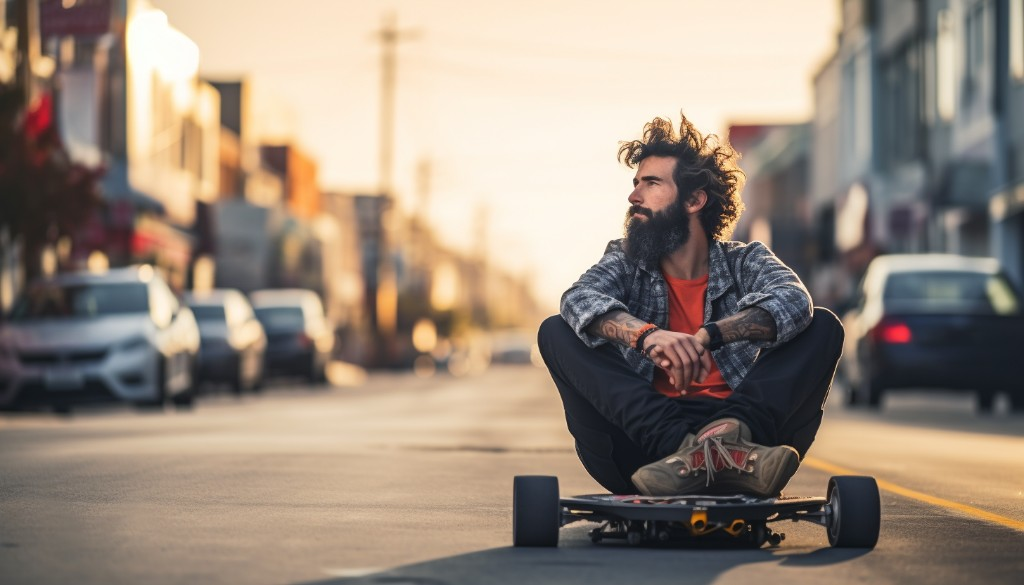
Successful Strategies for Night Riding
Night riding on an electric skateboard presents its own set of challenges and likewise requires its own set of strategies.
Visibility is crucial when riding at night. Other road users need to be able to see you, and you need to be able to see potential hazards. Use front and rear lights, wear reflective clothing and consider a helmet with an integrated light.
Signal usage is another aspect to consider when you want to stay safe while riding your electric at night. Other road users should be able to predict your movements to avoid accidents. Use hand signals when turning or stopping, or consider using a wireless turn signal system if available.
Finally, adapting your riding techniques for night conditions can help ensure you remain safe while riding an electric skateboard. Here are some simple tips to follow to keep you safe when skateboarding at night:
- Slow down: It’s harder to see hazards at night.
- Avoid poorly lit areas: Stick to well-lit paths whenever possible.
- Be extra cautious at intersections: Other road users might not see you as easily at night.
By keeping these strategies in mind, you can enjoy a safe and fun ride on your electric skateboard, regardless of the time of day!
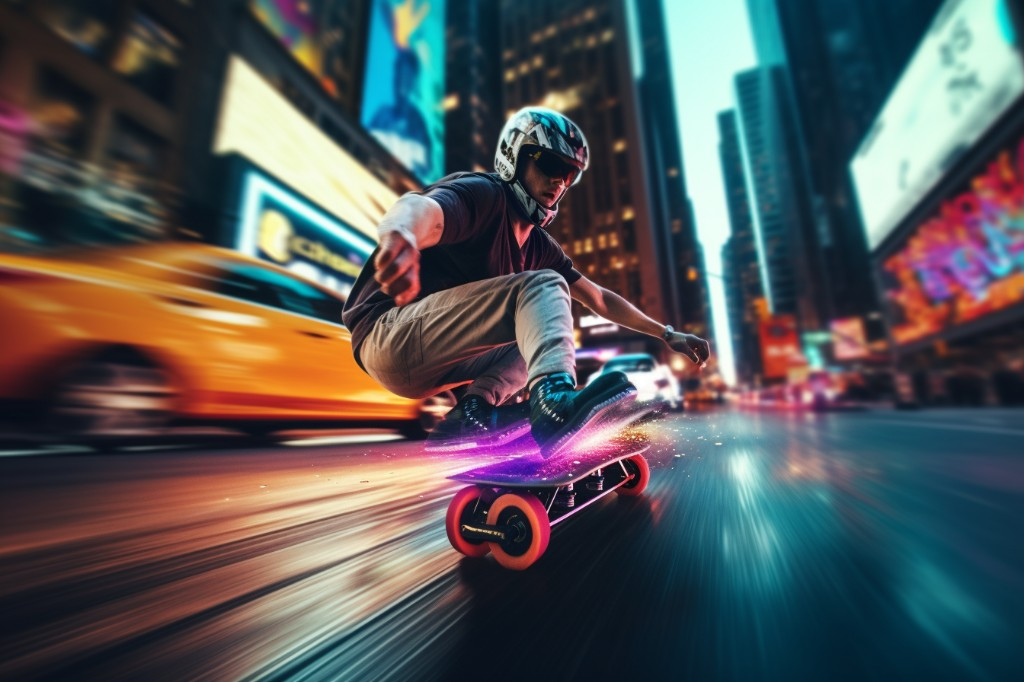
Keeping Up With Maintenance
The heart and soul of an electric skateboard, its performance, and longevity largely depend on regular maintenance checks. When we talk about electric skateboard maintenance, it’s not just about cleaning the surface. It’s more about ensuring that every component is functioning as it should, and taking prompt actions if anything seems amiss. Here are some key points to consider:
- Regular electric skateboard maintenance involves checking the wheels for any signs of wear and tear. If they seem too worn out or uneven, it might be time for a replacement.
- The trucks also need frequent checks. Any loose screws or bolts can result in unnecessary accidents. Hence, keeping them tight is important.
- The grip tape also plays a crucial role in your safe rides. If it starts peeling off, it’s a clear signal for a replacement.
- Do not forget to check the board for any cracks or damages. Remember, a minor crack can lead to a major breakage.
Apart from these physical checks, looking after the battery is another major aspect of electric skateboard maintenance. Just as we humans need food to keep going, your skateboard needs regular and proper battery charging for optimal performance.
How Battery Life Impacts Your Ride
The battery is like the heart of an electric skateboard. If the heart isn’t beating right, your ride won’t feel right either. The overall performance of your electric skateboard is tied to its battery life. A well-charged battery will provide better acceleration, higher speed, and will last longer.
A drained battery will not only cut your ride short but will also affect the speed and power of your skateboard. Hence, it’s imperative to check the battery before every ride to keep you moving safely through traffic.
Overcharging the battery can degrade its performance over time. Therefore, avoid leaving it on charge overnight or for prolonged periods. Properly storing the battery when not in use can also elongate its life. A cool and dry place is ideal for storing batteries.
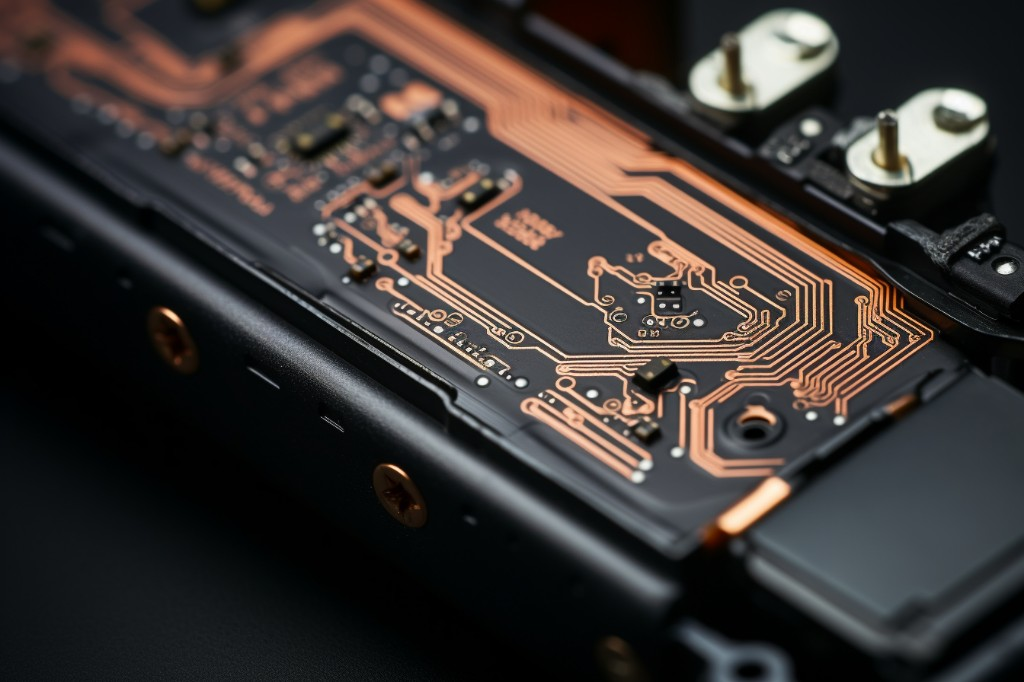
Importance of Regular Checkups and Basic Maintenance
Electric skateboards are fun, but they are machines after all. Just like any other machine, regular checkups and basic maintenance are vital for their smooth operation and longevity. Here is a maintenance checklist for you to take advantage of:
- Checking the skateboard components such as wheels, trucks, grip tape, deck, and battery is not something you should compromise on. Timely checks can prevent major damages and accidents.
- Brake checks are equally important for safe riding. Imagine cruising at a high speed and the brakes fail to respond! Scary, right? Hence, always ensure that the brakes are working properly.
- Occasionally applying lubricants to moving parts can prevent them from wearing out quickly.
- Lastly, replacing parts when necessary is better than waiting for them to completely wear out or break.
Regular maintenance not only ensures safe rides but also saves you from spending extra on major repairs. So why wait? Grab your toolkit and give your electric skateboarding a thorough check today!
Closing Thoughts
Navigating the ebb and flow of electric skateboard riding comes down to a comprehensive understanding of these innovative devices and the commitment to safety, starting from choosing the right gear for optimum comfort and shielding. Mastering the art of riding is an ongoing process, where balance, technique, and agility merge into a seamless dance. This mastery is even more critical when navigating the traffic landscape, where safety and efficient mobility are paramount. Regular upkeep is a significant part of this riding culture, ensuring your board delivers optimal performance and remains durable over time. Happy skateboarding!
Frequently Asked Questions
What are some essential safety tips for riding an electric skateboard in traffic?
When it comes to riding an electric skateboard in traffic, it’s crucial to stay aware of your surroundings, anticipate potential hazards, and always adhere to traffic rules. This includes shoulder checking before making moves, being able to execute emergency maneuvers swiftly, and understanding the importance of safe braking.
What type of safety gear is necessary for riding an electric skateboard?
Safety gear for riding an electric skateboard consists of a helmet to protect your head, knee pads, elbow pads, and wrist guards to shield against falls. In addition, wearing bright or reflective clothing can help increase visibility in traffic.
How to maintain balance while riding an electric skateboard?
Maintaining balance while riding an electric skateboard comes down to practice and developing core strength. Other helpful strategies include aligning your center of gravity with the board, keeping your feet shoulder-width apart, knees slightly bent, and eyes forward.
What are some effective strategies for navigating through traffic?
Effective strategies for navigating through traffic include understanding and respecting road rules, being highly observant of your surroundings, anticipating potential hazards, and using hand signals to communicate your intentions to other road users. It’s also important to practice safe braking techniques to control your speed effectively.
How regular maintenance can enhance the performance and durability of an electric skateboard?
Regular maintenance like checking the condition of the wheels, the tightness of the trucks, and the state of the battery can greatly enhance your electric skateboard’s performance. Additionally, cleaning your board after use and storing it properly can prevent damage and prolong its lifespan.

